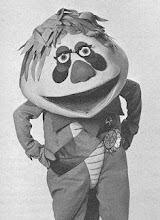If, for some bizarre, otherworldly reason you wanted to read my current topic paper, here it is. For a bibliography, contact me directly.
TRANS-GENRE COLLABORATIONS: A CURRENT TOPIC IN PROFESSIONAL BRASS MUSICIANSHIP
By Patrick Bigsby
The careers of musicians, cultivated in a conservatory or a basement, are linked directly to public taste. To quote one of America’s most versatile entrepreneurs, “No one ever went broke underestimating the taste of the American public.” While P.T. Barnum likely intended this remark as a tongue-in-cheek observation of some of his customers’ baser instincts, a Barnum scholar would also know that this quip contains valuable advice from the prince of humbugs: entertainers must be prepared to be flexible in the face of a fickle audience.1
In an era where professional orchestras and wind bands, under financial pressure, are contracting their cores or even folding, brass players need to be prepared to broaden their focus in order to stay relevant to music consumers. Often this means collaborating with another established artist and transcending genres.
Arguably, the brass world’s masters of collaboration are the Dirty Dozen of New Orleans funk fame. Since incorporating in 1977, the group has recorded or performed live with a diverse swath of musicians including Dr. John, Dizzy Gillespie, Branford Marsalis, Elvis Costello, DJ Logic, Norah Jones, Danny Barker, Widespread Panic, Modest Mouse, John Medeski, Dave Bartholomew, Eddie Bo, Olu Dara, and Robert Randolph. Although the Dirty Dozen could be considered a premier ensemble in its element, the market share for New Orleans jazz is miniscule in the context of commercial music. By appearing with and backing popular acts with established followings, the Dirty Dozen gain sympathetic ears in otherwise untapped audiences. This, in turn, translates into name recognition, tour attendance, and album sales.
Brass players’ desire to branch out isn’t a new concept (though reassessment in many academic circles is overdue). Tom Malone and Alan Rubin of the Saturday Night Live Band found new exposure via Jake and Elwood Blues and Stax Records. Both went on to play extensively with rock and blues bands such as The Band, The Rolling Stones, and Blood, Sweat and Tears. Another SNL alum, Howard Johnson, leveraged his collaborative ability so successfully that he brought the tuba ensemble into the blues spotlight. Johnson, a renowned jazz musician, was joined by three other tubists on a live album recorded by Taj Mahal. By being willing to expand his musical palette, Johnson combined the blues (a popular, even profitable tradition) with tuba quartet (an eccentric, even unmarketable tradition) and enhanced brass’ commercial viability indefinitely.3
Outside of the United States, similar trends are occurring. “Cinnamon Girl” rocketed to the top of the dance charts in 2008 by virtue of its popularity in European clubs. The tune features the danceable hooks of Dutch indie electronic artist [dunkelbunt] - a musical innovator in his own right – and the raw energy from the Balkan brass group Boban I Marko Markovic Orkestar. Much like their peers in the Dirty Dozen, Boban’s troupe could be called the top act in Balkan music (they, along with Fanfare Ciocarlia, made significant contributions to the heavily modal soundtrack of Borat: Cultural Learnings of America for Make Benefit Glorious Nation of Kazakhstan). However, the worldwide clout of European pop music fans far outweighs Balkan brass enthusiasts and the collaboration was no doubt a profitable undertaking. [dunkelbunt] has also released singles with Fanfare Ciocarlia and the Amsterdam Klezmer Band.4
Mexican brass aficionados, however, might see this trend working seemingly in reverse – pop singers using the musical credibility and popularity of banda (and related styles) ensembles to enhance their own music-making. Popular Mexican singers Selena, Juan Gabriel, Michael Concepcion, and Vicente Fernández have all recruited brass bands to back them on either albums or tours.2
Brass educators should take particular notice of the validity of collaborating with pop artists. Many students envision careers sitting in the back row of orchestras, performing ceremonies with premier military bands, or releasing solo and chamber albums. These are lofty and worthwhile goals, but likely also unrealistic in a world where classical concert attendance is dwindling and recorded music is sold piecemeal. Versatility and open-mindedness must become the mantra of the next generation of brass players. They must simultaneously hold fast to a traditional skill set grounded in musicianship while looking for performance opportunities beyond typical settings for their instrument. Perhaps a difficult balance to strike, but, after all, that’s show business.
Saturday, April 3, 2010
Subscribe to:
Post Comments (Atom)

No comments:
Post a Comment